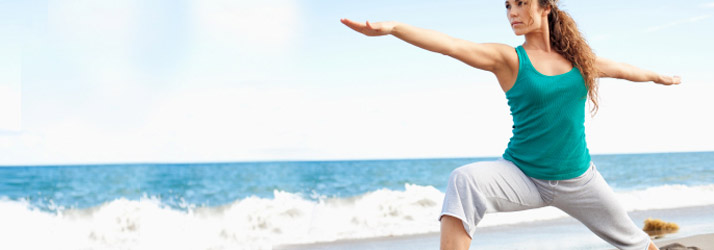Top 10 Corrective Exercises And Stretches To Do Daily To Improve Your Posture
Top 10 Corrective Exercises And Stretches To Do Daily To Improve Your Posture

The two most common questions I get about poor posture at my Shelburne office are “What causes it?” and “What can I do about it?”
Let’s look at the anatomy and physiology of posture to understand what causes poor posture. Once you understand the cause, the solution becomes clear.
Your skeleton provides the structure or scaffolding your body needs to define how your body will work in a gravitational environment. The bones are shaped specifically to not only bear weight, but also to act as levers for the muscles tendons and ligaments to attach to so they can do their job of moving the body around and holding a certain posture.
Muscles, tendons and ligaments have the primary purpose of moving the joints and the secondary purpose of strapping down the joints depending on the demand and need in the moment.
When you contract a muscle, it shortens. When a muscle is at rest, it lengthens. Ligaments have the purpose of connecting and stabilizing joints so they may have some give to them, but they don’t actively contract or relax, they simply hold. Tendons are at either end of a muscle and are the parts that attach to the bones.
Any action in the body will have some joints moving while others are stationary. To walk, we will need some muscles contracting, others relaxing and still others working to stabilize or strap down an area. This applies to standing and sitting with good posture: some muscles will be working and others will be relaxing. And all of this is coordinated by the nervous system. So posture, good or bad, is determined by how healthy your neuromusculoskeletal system is working.
Poor posture is both causing and resulting from weakened muscles coupled with the tightening of the opposing muscle groups. It can be a vicious cycle leading to worse posture as the years go by and once it gets a start, time and gravity are not on your side… unless you are proactive about it.
We are designed to have great posture. When we think of a toddler just figuring out how to shift from being a crawling all-terrain vehicle to zooming around on two legs, notice how they have perfect posture from the beginning. They have to! Their head is the biggest and heaviest part of their body and getting it squarely up on top of their spine is essential or they will fall over! If we start out as youngsters with stellar posture, how do we lose it?
Then over the years, something happens to some people, and we are seeing it in younger and younger populations these days, where posture gets worse over time.
If we understand how the neuromuscular system works, we will understand where things can go awry.
If you want to bend your elbow, the bicep muscle contracts and the triceps muscle on the back of the arm would need to relax and stretch so the movement could happen, while the ligaments in the elbow joint hold the hinge steady for smooth movement. But what if the triceps muscle is spasmed so it won’t lengthen as the biceps muscle tries to contract? Or what if the triceps isn’t spasmed, but is simply too tight and limits the range of movement? Now you will have a compromised movement in the arm, and you may compensate by developing ways to get around it so you can still function, but this may cause more problems from putting increased demand on other areas.
So having great posture relies on core muscles being strong coupled with muscles that are supple enough to lengthen when needed and ligaments in tact to hold the hinges steady.
Certainly, if the nervous system is interfered with, it could result in aberrant messages signaling the muscles to do the wrong things. That is where my job as a chiropractor comes into play as the member of someone’s health care team who is always watching the nervous system to keep it optimized so you have the optimal health and the best life possible. Check this out to learn more about how we do that.
When you wonder about what YOU can do to improve your posture, besides breaking bad habits, thinking about a combination of strengthening and lengthening exercises is the key.
So exactly what exercises will give you the greatest benefits where you will cover the most ground in the shortest amount of time? Read on.
Strengthening Exercises:
- Life Extension Exercises,
- The Wall Nod/ Lean,
- The Inner Corset,
- Planks
The Life Extension Exercise is a combination of upper body movements that put the arms into 4 different positions to strengthen the back muscles.
- Hold the arms straight up above the head in a Y shape, the way a football empire signals a touchdown. Reach for the sky for 20 seconds as you take a few deep breaths.
- Pull the elbows down and back in a W shape, like you are trying to place them right into your back pockets. Squeeze tight for
- With your elbows down at your side, pivot your hands outward in an L shape until you can’t see your fingers in your peripheral vision if you are looking straight ahead and hold for 20 seconds as you take a few deep breaths.
- Stretch your arms wide out to the sides in a T shape until you can’t see your fingers in your peripheral vision if you are looking straight ahead and hold for 20 seconds as you take a few deep breaths.
YWLT.
I like to remember this with the acronym You Will Love This! Do this twice per day.
The Wall Nod/ Lean involves standing with your heels, butt, shoulders and head against a wall and keeping all these parts against the wall, nod your head up and down sliding the back of your head down and up in constant contact against the wall. You will notice the nodding down of the chin the challenging part that will make you want to let your head come away from the wall. But this is the most important part of the exercise where you will begin to stretch the tightened muscles in the back of the skull that have been working so hard to keep your head from falling off your shoulders from slumping posture. Do 5 nods twice per day.
The Wall Lean is simply taking a step away from the wall so that just the back of your head is still touching the wall and holding your body straight for a few minutes to strengthen all the back muscles. Make sure you don’t let your shoulders drift back towards the wall.
The Inner Corset Exercise comes from Esther Gokhale. Stand with feet shoulder width apart and raise your hands over your head, palms up, like you are carrying a laundry basket over your head. You will feel your abdomen stretch as your ribs stretch up. Keep the abdomen and ribs lifted as you lower your arms. Next, with your abdomen and ribs continuing to be held lifted up, focus on the tip of your tailbone and lift it up and back more than you would expect until you feel the weight on your feet shift from your toes to your heels. You may be feeling a bit ridiculous right about now, like you are being downright sassy! Finally, as you continue to hold your tailbone up and back, focus on the front lower ribs and tighten them down just a millimeter towards your pelvis without letting your pelvis tuck back down. Hold this posture any time you are standing. It is an active pose that you will need to continuously keep coming back to each time you realize you have drifted out of it. This is one of the healthiest and best core strengthening exercises I know.
Planks are done by lying face down, raising yourself into a push up position with your weight either on your hands with straight arms, or on your elbows with bent arms, keeping your entire body straight for 2 minutes. Watch that you don’t lift up your bottom or let it sink down. If you start losing the correct form, take a break and start again. Over time you will be able to hold it longer. Being able to do a 2 minute plank is a crucial sign of maintaining independence in the elderly because it indicates that you will be able to get up from falling. If you are unable to do this on the floor, you can start by leaning against a wall with your arms stretched out in front of you. The further your feet go back away from the wall, the harder it will be. You can transition to a counter or chair until you are strong enough to go to the floor. Do this once per day working up to 2 minutes and then continue once per day for 2 minutes.

Now that you know the strengthening, let’s get to the lengthening.
Lengthening Stretches
- The Tush-Pull Sit,
- The Stargazer,
- The Wall Corner Stretch
The Tush-Pull sit is done anytime you are sitting. It is a way to set yourself up at the beginning of sitting down to then have great sitting posture without working at it. First, while still standing up, imagine you have the tail of a cat. The rule is, you never sit on your tail, so you will lift up your tailbone before you sit down. Once you are seated, lift up your right hip and using your right hand, grab onto your bottom and pull it back so the upper part of the thigh muscle is stretched back behind the sit bones. Do not pull out to the sides, but instead pull directly back behind you. Rock back down resting your butt cheek down onto the chair and repeat on the left side. Doing this will rotate the pelvis forward and create a forward curve in the lumbar spine. Once you have done this, the final step is to let your torso lean back so you can feel the ease in your mid-back as you stack the vertebrae up over your sacrum. Do this every time you sit, whether it is driving, working, eating or watching a movie on the couch.
The stargazer is done by simply arcing your head and neck back as though you were gazing at the stars. It is not crunching your neck back, but rather, think of an arch that extends through your neck all the way down your back so you feel the stretch through the whole front of your chest and stomach. Lean back more than you would expect for a breath or two. Do this every hour you are sitting.
The wall corner stretch is done by standing facing into a corner with arms spread wide apart, palms on the wall and leaning forward to stretch the chest muscles. If you don’t have any free corners, then simply do one arm at a time by holding the arm out facing the wall and rotating your body away from your arm to feel the stretch in your chest.

Upper cross syndrome
Upper Cross Syndrome is a description of how certain muscles are weak and the opposing muscles are tight causing slumping posture with the head being carried out in front of the shoulders. It occurs in a cross when looking at the body in a side view: the back muscles make up the lower posterior quadrant and the muscles of the front of the neck make up the upper anterior quadrant. These are weak and stretched out while the chest muscles in the lower anterior quadrant, and the shoulders and back of the neck in the upper posterior quadrant are tight.
To reconcile upper cross syndrome, we simply need to stretch the tight quadrants and strengthen the opposing weak quadrants.
- The wall corner stretch, stargazer and the wall nod will lengthen the anterior lower and posterior upper quadrants working on the pectorals, posterior neck, sub occipital muscles, upper traps and levator scapular muscles.
- The Life Extension exercises and Wall Nod/Lean will strengthen the anterior upper quadrant and the posterior lower quadrant working on the lower traps/ rhomboids and anterior neck flexors

Lower cross syndrome
Lower Cross Syndrome refers to the lower body from the bottom of the ribs to the bottom of the pelvis, where the lower posterior and upper anterior quadrant muscles of the torso are weak and the upper posterior and lower anterior muscles are tight. Here are three additional exercises you will need to know for the lower cross.
- Lunge: To do a lunge, simply take a giant step forward with your right leg and let your left knee sink down toward the ground so you feel the stretch in the left side of the front of your abdomen and thigh. Repeat on the opposite side.
- A side stretch is done by kneeling or sitting and stretching your arm up over your head and leaning to the side so you feel a stretch along your ribs and in the side of your low back. Repeat on the opposite side.
- A bridge is done lying on your back with your knees ebnt and feet flat on the ground. Simply lift your hips up off the ground squeezing you buttocks muscles together.
To reconcile lower cross syndrome, do this:
- Lunges and Side Stretches will stretch the tight Quadratus Lumborum and Psoas muscles and the Tush-Pull Sit will allow them to stay relaxed when you sit.
- Use the Inner Corset, Plank, and Bridge to strengthen weak gluts and abs.
Putting the time in to do a few daily exercises using gravity to shift your physiology lets you enjoy a healthy and strong posture over a life time, keeping time and gravity on your side.
OFFICE HOURS
Monday
2:00pm - 6:00pm
Tuesday
7:00am - 12:20pm
Wednesday
2:00pm - 6:00pm
Thursday
7:00am - 12:30pm
3:00pm - 6:00pm
Friday
Closed
Saturday
Closed
Wellspring Chiropractic Lifestyle Center
4076 Shelburne Road #5
Shelburne, VT 05482
(802) 985-9850


